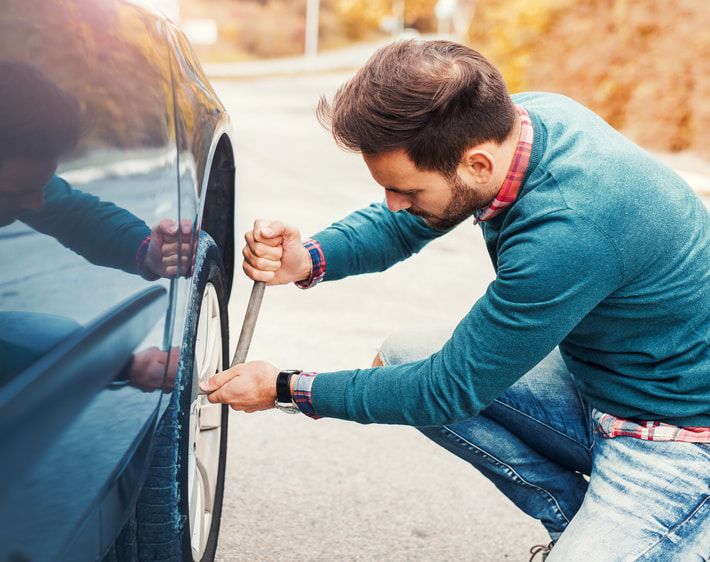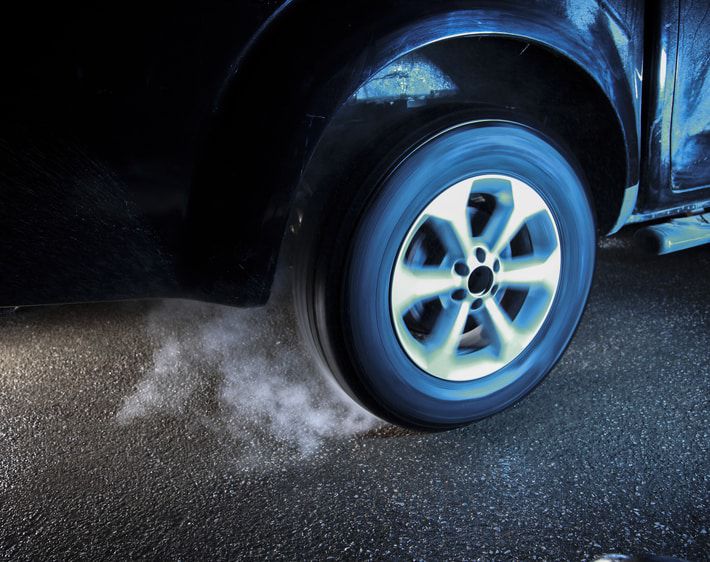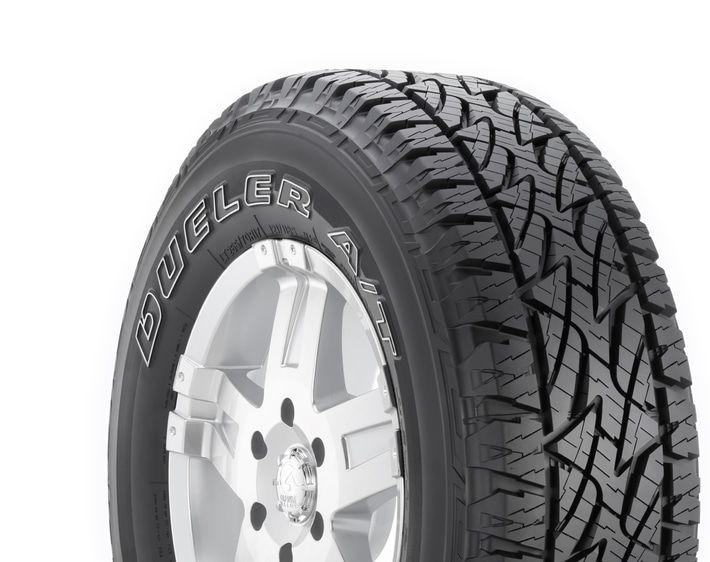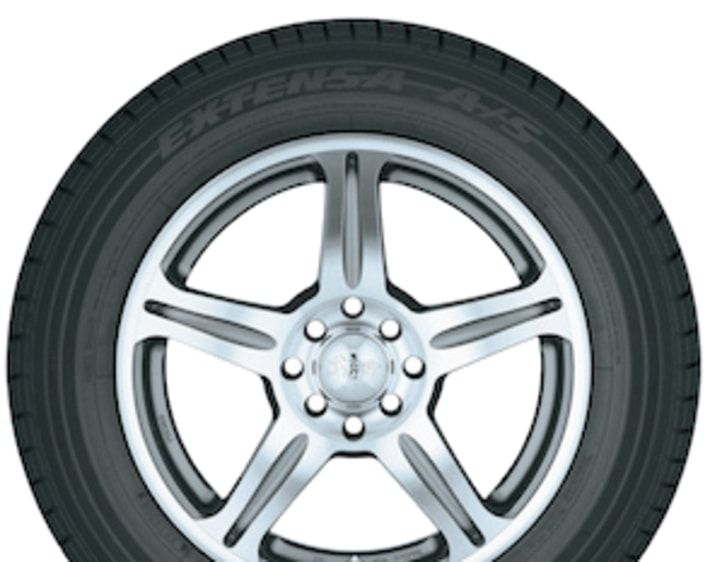Few things are more inconvenient than a flat tire...except BACK-TO-BACK flat tires. What gives? Is your car cursed? Most likely not, especially when you consider all of the other, not-so-supernatural reasons why you might keep getting flats despite not having a punctured tire. Learn what these reasons might be and what you can do to help prevent flat tires from deflating your spirits!
1. Tire Age
The rubber in tires degrades over time, even if the tires are not in use (which is why you should check your spare regularly). Like unopened perishables in the refrigerator, old tires can look new, but still lack the quality and reliability of recently manufactured ones. That's why many manufacturers recommend that tires produced more than 6-10 years ago be taken out of service, even if they were never used!
When the rubber in tires degrades due to age, exposure to the elements, or a combination of both, it may crack. In turn, cracks in your tire rubber can be hard to spot and repair, leading to slow leaks, recurring flats, and even blowouts. If you suspect one of your tires’ tread is worn out or cracked due to age, bring your car into a Firestone Complete Auto Care near you to get a tire pro’s opinion.
2. Dry Rot
Tire age isn't the only thing that can cause cracks in tires. Dry rot can wreak havoc on the integrity of your tire's sidewall, too! But what is tire dry rot? Tire dry rot is a term that describes tire brittleness caused by natural rubber deterioration.
Unlike dry rot in trees or wood, this type of “decay” isn’t caused by fungi or bacteria. Tire dry rot can occur when either age or exposure to certain conditions has harmed a tire’s rubber compounds — leaving the tire dried out and vulnerable to cracks and flaking. Several things can cause dry rot, including:
- Extreme temperatures
- Exposure to corrosive chemicals
- Excessive UV damage from direct sunlight
- Extended periods of disuse or long-term parking
- Low tire pressure
With proper tire care and regular inspections, you can help prevent dry rot. If you plan on leaving your car parked for an extended period of time, make sure to gauge your tire pressure at least once a month, and inflate as necessary. Ensure that the tires don't sit in direct sunlight for extended periods by using tire covers or a car cover, or parking in a covered garage.
If you notice signs of tire dry rot such as cobweb-like cracks along your tire sidewall or chunks of rubber “hanging” off the tire, visit Firestone Complete Auto Care for recommendations on what to do next. One of our tire technicians will inspect your tires, let you know what the problem is, and recommend services or replacement options accordingly.
3. Faulty Valve Stem
You changed your tire, and just a few miles down the road, that newly-changed tire is flat, too! What’s going on? If you’ve already verified that the tire tread does not have holes or punctures and the sidewalls are intact, you might have a faulty valve stem.
The valve stem is a component on the wheel that helps regulate tire air pressure. Valve stems are composed of several different parts, including a valve stem core and valve stem cap. The core allows air in and out of the tire while the cap helps keep debris out of the core. In most vehicles manufactured after 2008, the tire pressure monitoring system (which we'll cover shortly) is integrated into the valve stem.
Valve stems and their components can crack and wear due to age, moisture, heat, road salt, and even UV rays! Valve stems that are damaged in any way can cause leaks, leading to low tire pressure and recurring flats. In turn, driving with underinflated or flat tires can cause premature tread wear, poor handling, and decreased fuel efficiency!
You can get ahead of leaky valve stem problems by having your valve stems replaced every time you get new tires. At Firestone Complete Auto Care, we replace valve stems and/or TPMS rubber components every time we install a new tire. After all, we know that it’s a small service that can save you from a major inconvenience! If you suspect your valve stems are already worn or damaged, pull into your local Firestone Complete Auto Care for tire repairs and a free tire pressure check.
4. Leaky Tire Bead
Like a damaged valve stem, a leaky tire bead can be to blame if you keep getting flats. Tire bead leaks are also known as bead-seat surface leaks, wheel leaks, or rim leaks.
The tire bead is the rubber edge where your tire fits into the wheel or rim. Tire beads are made of specialized metal-reinforced rubber compounds designed to hug the wheel in a way that ensures an airtight seal and prevents the tire from spinning on the rims.
Rim leaks can result from incorrectly installed tires, which is why you should seek professional help if you are not sure how to properly replace a flat tire. Additionally, damaged, bent, or corroded wheels can also lead to bead-seat surface leaks. These issues typically are caused by accidents like slamming into a curb or running over a speed hump, which makes them hard to prevent.
However, don’t despair! If you notice that you keep losing tire pressure, visit Firestone Complete Auto Care. Our expert technicians can help find the source of the leak, reseat the tire bead, or replace your wheels, if needed.
5. Faulty TPMS
There's a good chance your Tire Pressure Monitoring System (TPMS) is the reason you’ve noticed your car’s recurring flats in the first place. But have you stopped to consider that your tire pressure monitoring system could be faulty itself? Though uncommon, it can happen.
Your TPMS has sensors designed to warn you if your tire pressure is below a certain threshold. When your tires are underinflated, the TPMS activates a dashboard warning light that looks like an exclamation mark inside an open circle or an overhead diagram of your car’s four tires as located on the chassis frame.
| TPMS Dashboard Signal | Meaning |
|---|---|
 |
One or more of your tires is significantly underinflated. |
| The illuminated tire is significantly underinflated. |
Even though a faulty TPMS does not mean you have a flat tire, it might lead you to believe you do! Like in the story of the boy who cried wolf, a faulty TPMS can raise the alarm for flats when your tires aren’t really underinflated.
TPMS malfunctions can happen due to a variety of factors including faulty wiring, weak sensor batteries, or improper sensor programming or relearning — which is why many drivers notice TPMS faults immediately after a tire rotation or sensor installation. Additionally, canned tire repair sealants and impact to the tires can also damage or break the delicate components of your tire pressure monitoring system.
Whether your TPMS light is on for the first time or blinking for the fortieth, you can stop by Firestone Complete Auto Care for a free tire pressure check that’ll help verify whether or not your tires are at-fault. If your tires are properly inflated and the light is still on, visit Firestone Complete Auto Care. Our techs can help diagnose and repair your TPMS issues, so you can stop fretting over “fake” flat tires!
Tired of Changing Tires?
From dry rot to faulty tire pressure monitoring systems, there’s a variety of things that can go wrong and lead you to experience (or believe you are experiencing) frequent flat tires. At Firestone Complete Auto Care, we’re here to help your car go right! Visit your local car care shop for tire repairs, TPMS diagnostics, and more.



